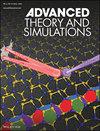Wave Propagation Approaches for Design Optimization of Asymmetric Double-Layer Gold Gratings: Logic- and Learning-Based Perspectives
IF 2.9
4区 工程技术
Q1 MULTIDISCIPLINARY SCIENCES
引用次数: 0
Abstract
This study investigates logic- and learning-based wave propagation approaches for optimizing asymmetric double-layer gold grating structures to maximize transmission and polarization performance. The logic-based wave method (LgWM) utilizes the multiple-layer model and transfer matrix calculations to identify optimal design parameters for specific wavelength targets, offering an efficient yet limited approach for single-wavelength optimization. In contrast, the learning-based wave method (LnWM) based on the explainable neural network (XNN) is developed to predict TM transmission spectra across a broad range of parameter combinations and wavelengths. By leveraging XNN frameworks, this LnWM addresses challenges of simulation domain constraints and parameter sparsity, enabling dense predictions across all design combinations. Results demonstrate that the LgWM achieves higher extinction ratios but is constrained in parameter flexibility, while the LnWM supports customizable objective functions and outperforms in multi-wavelength optimization. Specifically, the LnWM identifies a broadband optimal design with 2.5 times higher extinction ratios across 3–5 µm wavelengths compared to the LgWM. The complementary characteristics of these wave propagation approaches provide versatile tools for optimizing asymmetric grating structures, balancing efficiency and flexibility to meet diverse design objectives. The source code and trained models are made publicly available at https://github.com/AVIP-laboratory/Asymmetric-Au-gratings.

求助全文
约1分钟内获得全文
求助全文
来源期刊

Advanced Theory and Simulations
Multidisciplinary-Multidisciplinary
CiteScore
5.50
自引率
3.00%
发文量
221
期刊介绍:
Advanced Theory and Simulations is an interdisciplinary, international, English-language journal that publishes high-quality scientific results focusing on the development and application of theoretical methods, modeling and simulation approaches in all natural science and medicine areas, including:
materials, chemistry, condensed matter physics
engineering, energy
life science, biology, medicine
atmospheric/environmental science, climate science
planetary science, astronomy, cosmology
method development, numerical methods, statistics
 求助内容:
求助内容: 应助结果提醒方式:
应助结果提醒方式:


